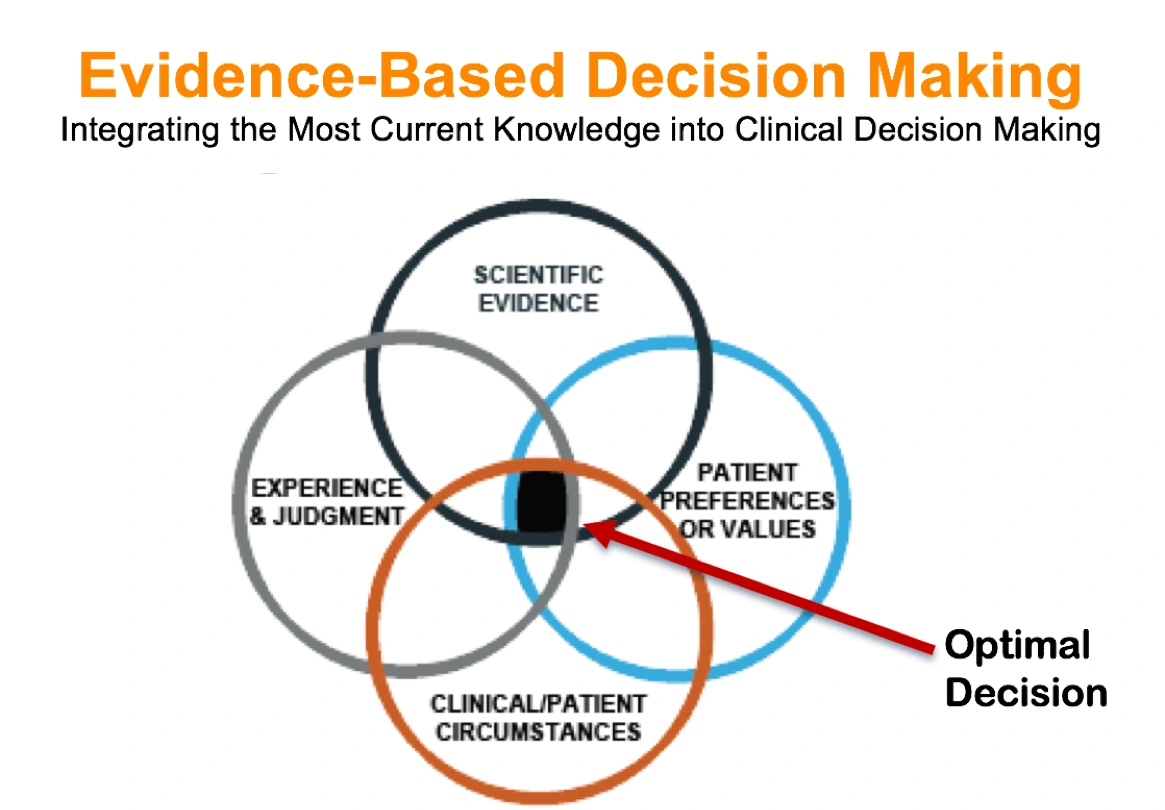Evidence-based Decision Making: Introduction and Formulating Good Clinical Questions
Course Number: 311
Introduction - What is EBDM?
Evidence has always contributed to clinical decision-making; however, with the proliferation of clinical studies and journal publications, keeping current with relevant research is nearly impossible. Because we rely on well-designed research studies to demonstrate the efficacy and effectiveness of diagnostic tests, treatment strategies, new materials, and products, knowing how to find the scientific evidence is an essential component for clinical practice.
Using evidence from the medical literature to answer questions, direct clinical action and guide practice was pioneered at McMaster University, Ontario, Canada in the 1980’s. As clinical research and the publication of findings increased, so did the need to use the medical literature to guide practice. The old clinical problem-solving model based on individual experience or the use of information gained by consulting authorities (colleagues or text books) gave way to a new methodology for practice and restructured the way in which more effective clinical problem-solving should be conducted. This new methodology was termed Evidence-Based Medicine (EBM)1 and its definition is currently stated as:
The integration of the best research evidence with our clinical expertise and our patient's unique values and circumstances.2
Rather than refer to medicine, often this definition has been broadened to mean ‘practice’ or ‘healthcare’ and is the definition we are using for Evidence-Based Practice (EBP).
Several professions have adapted this definition to make it specific to their discipline. For example, the American Dental Association (ADA) defines "evidence-based dentistry" (EBD) as: an approach to oral health care that requires the judicious integration of systematic assessments of clinically relevant scientific evidence, relating to patient’s oral and medical condition and history, with the dentists’ clinical expertise and the patient’s treatment needs and preferences.3
Inherent in these definitions is the recognition that research evidence is a valued component of the clinical decision-making process, and the intent is that the use of current best evidence does not replace clinical skills, judgment, or experience but provides another dimension to the decision-making process that also considers the patient’s preferences (Figure 1).2 It is this decision-making process that we refer to as Evidence-Based Decision Making (EBDM) and is defined as:4
The formalized process of using the skills for identifying, searching for and interpreting the results of the best scientific evidence, which is considered in conjunction with the clinician's experience and judgment, the patient's preferences and values, and the clinical/patient circumstances when making patient care decisions.
Again, EBDM is not unique to medicine or any specific health discipline, but represents a concise way of referring to the application of evidence to clinical decision-making.
Figure 1. EBDM Process.
©2002 Forrest, NCDHR


